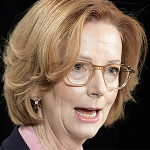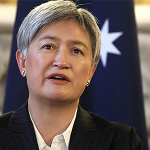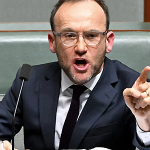My guess is that Treasurer Jim Chalmers is wondering if he’s kicked an own goal by pushing through structural changes to the Reserve Bank of Australia (RBA), including initiatives to improve transparency.
Now the RBA Governor gives a media conference after each board meeting to explain interest rate decisions. Prior to the review, these were rare events because maintaining calm financial markets required deliberate and controlled communications.
A media conference introduces risk; journalists can ask any question, and attempts to stay within safe parameters can break down with repeated questioning or just embarrassment at having to maintain a position that everyone in the room knows is overly hedged or just plain wrong.
With high interest rates and a pending election campaign, it is not just financial markets for which guarded RBA language is needed; the Albanese government’s credibility on inflation is also at stake, specifically whether its tax and spend policies are preventing mums and dads from interest rate relief.
In recent days, the Treasurer has denied RBA claims that the outlook for government spending is too strong and is therefore slowing down the return of inflation to 2-3 per cent.
But it is not just the RBA that Chalmers needs to dispute; there’s also some pesky data published by the Australian Bureau of Statistics (ABS) that supports the RBA’s narrative, not that of Albanese and Chalmers.
The operational theory used to control inflation in Australia and most countries relies on concepts of aggregate demand and aggregate supply.
If the total level of demand in an economy is greater than the capacity of the economy to supply that demand, then prices will be pressured to rise.
Because expanding the supply-side of the economy takes time and is mostly not controllable by government, the task of tackling an inflation problem rests on the RBA’s ability to reduce aggregate demand to a level closer to aggregate supply.
But because government spending is a component of aggregate demand, government policy can run counter to the RBA objective; it can boost aggregate demand just when a decline is needed. And that’s what’s happening now.
The ABS’s latest national accounts statistics are for the March quarter of 2024. By comparing spending in this quarter with the same quarter in 2023, we get an idea of what’s driving higher aggregate demand.
In the three months to March this year, the government and private sector purchased goods and services in the economy at a total value of $583.6 billion. Twelve months prior (March quarter 2023), the total was $570 billion.
So, in twelve months, there was an increased quarterly demand of $13 billion.
This $13 billion represents ‘real’ growth; it reflects an adjustment to remove the price effect. For example, if you buy a banana in 2023 for $1.10 and then in 2024 you still buy just one but at a higher price of $1.25, the national accounts will not record this as increased expenditure even though you spent more money. The only difference is in the price.
Of the total $13 billion, $7.3 billion is directly attributed to government spending (consumption and investment), and the rest is private sector, $5.8 billion.
This is revealing. The government sector accounts for about 28 per cent of aggregate demand yet was responsible for 56 per cent of new real spending growth.
But the government influence in aggregate demand does not end there.
That $7.3 billion does not reflect additional money that the government transferred to households through benefits, such as disability pensions, aged care pensions, electricity bill relief, childcare rebates, etc.
Compared with the March 2023 quarter, the increased amount of ‘real’ money transferred to households is about $3 billion.
By attributing that $3 billion to government policy decisions, we can see that almost 80 per cent of new real spending is due to government policy.
While this does reflect policies of both State and Federal governments, the central role of the national government in tax and welfare programs, plus the situation of blanket Labor governments across the mainland, means accountability sits squarely with Albanese and Chalmers.
The analysis is also for a period prior to the 2024 budget, a time when it was claimed that government was constraining spending to help with inflation. The role of government in driving higher real spending has only strengthened since the May Budget and the pending Qld election.
Not only is government primarily driving the demand side higher, but it is also simultaneously hurting the supply-side of the economy through destructive IR, energy, and care economy policies. This is evident, for example, in building approvals data which shows insufficient houses are being built to meet demand.
What a mess. But at least with renewed RBA transparency, the public is getting a bit more of an insight into the nature of the problems. We need to thank Jim Chalmers for that.
Nick Hossack is a public policy consultant. He is former policy director at the Australian Bankers’ Association and former adviser to Prime Minister John Howard.









